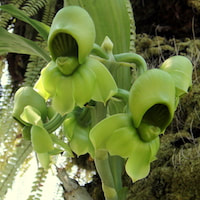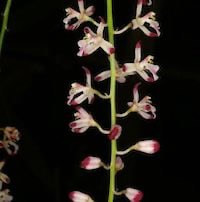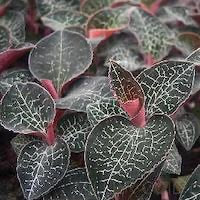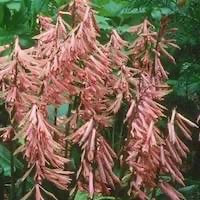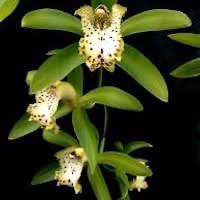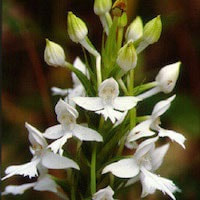Discover Oriental 1: The Ultimate Men's Fragrance
The Oriental 1 (Men) for Team building Perfume workshop features scented notes of the native Singaporean orchid Catasetum Integerrimum. This orchid, native to Mexico and Central America, is known for its spicy scent and unique features. Its flowers, which resemble monks wearing cowls, are fleshy, fragrant, and not fully open. Interestingly, the male flowers have the capability of ejecting their pollinia up to 8 feet to deposit them on insects rummaging around the flower.
The fragrance also incorporates therapeutic orchid notes from different orchid species:
To complete the fragrance, it incorporates scent notes of French verbena lemon, Florentine iris and violet leaves, Mysore sandalwood, and ambergris. The combination of these native orchid notes and complementary scent ingredients creates a captivating and aromatic perfume, perfect for the Oriental 1 (Men) for Team building Perfume workshop.
The fragrance also incorporates therapeutic orchid notes from different orchid species:
- Acriopsis liliifolia (Malay Names: Anggerek darat, Sakat Ubat Kepialu, Pemolek): Common in low-land forests and on roadside trees throughout Southeast Asia, Acriopsis liliifolia has antipyretic properties and is used to treat fever and hypertension in Indonesia. It is also used for treating rheumatism in the Western Ghats in India.
- Anoectochilus formosanus Hayata (Chinese names: Jinxian Lan, Benshanshisong, Jinqianzicao; Japanese: Sai-hai ran; Korean: Sanjago; Medicinal names: Shancigu, Maocigu): Found throughout Taiwan and the Ryukyu Islands, Anoectochilus formosanus is used in Traditional Chinese Medicine (TCM) for cooling the blood, detoxification, and treating various conditions like diabetes, bronchitis, and kidney infections. It contains several beneficial compounds, including kinsenoside with hepato-protective properties.
- Cremastra appendiculata (D. Don) Makino Syn. Crematra variabilis (Blume) Nakai; Cymbidium wallichiana Lindl. (Chinese name: Mabian Lan, Dujuan Lan, Shancigu; Japanese: Sanjiko; Korean: Sanjago): Known for its inhibitory effects on basic fibroblast growth factor and its anti-inflammatory properties, Cremastra appendiculata is used for treating various conditions, including pain, toothache, and insect bites.
- Cymbidium hookerianum Rchb. f. (Chinese name: Hutou Lan): Found in Bhutan and China, this orchid is used in India as a hemostatic agent when applied to cuts and injuries. In TCM, it is used for treating fractures and traumatic soft tissue injuries.
- Habenaria dentata (Sw.) Schltr. (Chinese names: Emaoyufeng Hua, Baifeng Lan, Dalucao; Chinese medicinal names: Shuangshenzi, Baihuacao; Taiwanese name: Bai Feng Lan; Thai names: Naang Oua Noi, Nang ua noi): This orchid, widely distributed across various regions, is used in TCM to benefit the lungs and kidneys and is considered diuretic, anti-inflammatory, and detoxifying. It is used to treat conditions like weak kidneys, impotence, stomach ache, orchitis, and coughs caused by tuberculosis.
To complete the fragrance, it incorporates scent notes of French verbena lemon, Florentine iris and violet leaves, Mysore sandalwood, and ambergris. The combination of these native orchid notes and complementary scent ingredients creates a captivating and aromatic perfume, perfect for the Oriental 1 (Men) for Team building Perfume workshop.
Other fragrance oils - Oriental 1, Oriental 2, Oriental 3, Oriental 4, Oriental 5, Oriental 6, Oriental 7, Oriental 8, Oriental 9, Oriental 10, Oriental 11, Oriental 12
Download the guided mediation that works best with this Orchid fragrance oi
| men_oriental_essential_oil_orchi_00001.mp3 | |
| File Size: | 114753 kb |
| File Type: | mp3 |
Therapeutic Blends for Men's Well-being
Contains Scented Notes of following in various proportions:
Native Singaporean Orchid notes: Catasetum Integerrimum
|
Catasetum Integerrimum - Used in Oriental 1 (Men) for Team building Perfume workshop
Catasetum integerrimum is an orchid species known for its spicy scent and is native to Mexico and Central America. It is an interesting addition to the Oriental 1 (Men) Team Building Perfume Workshop due to its unique features and fragrance. The plant typically produces 3 to 10 fleshy and fragrant flowers that have a distinctive appearance resembling monks wearing cowls. One of the fascinating aspects of Catasetum integerrimum is its reproductive strategy. The flowers of this orchid can be either male, female, or hermaphroditic. The male flowers have a specialized mechanism for pollination. They have the ability to eject their pollinia (pollen masses) up to 8 feet away with force. This mechanism is known as "explosive pollination." When an insect, such as a bee, visits the male flower to search for nectar, the pollinia are forcefully ejected, landing on the insect's back. As the insect moves on to another flower, the pollinia are then transferred to the female or hermaphroditic flowers, leading to cross-pollination and the fertilization of the seeds. The explosive pollination mechanism of Catasetum integerrimum is an example of specialized coevolution between the orchid and its pollinators. It ensures efficient pollination and the continuation of the species. This unique adaptation sets it apart from many other plants that rely on more passive methods of pollination. In the context of the Oriental 1 (Men) Team Building Perfume Workshop, the inclusion of Catasetum integerrimum adds a distinctive fragrance and showcases the fascinating reproductive strategy of orchids. Participants can learn about the ecological interactions between plants and insects, which is crucial for the survival and propagation of many plant species, including orchids. As with any botanical workshop, it is essential to provide participants with proper guidance on handling orchids and other plant materials, as well as educating them about the conservation efforts necessary to protect these unique and valuable species in their natural habitats. Orchids, like many other plant species, are vulnerable to habitat loss and overexploitation, making conservation efforts critical for their long-term survival. By raising awareness and appreciation for these fascinating plants, workshops like the Oriental 1 (Men) Team Building Perfume Workshop can contribute to the conservation of orchids and other botanical treasures around the world. |
Therapeutic Orchid notes:
|
Acriopsis liliifolia
Malay Names: Anggerek darat, Sakat Ubat Kepialu, Pemolek Acriopsis liliifolia, commonly known as Anggerek darat, Sakat Ubat Kepialu, or Pemolek in Malay, is an orchid species found in lowland forests and on roadside trees throughout Southeast Asia. The name "Acriopsis" is derived from the Greek words "acris" (locust) and "opsis" (resembling), which might refer to the locust-like appearance of some species in this genus. One interesting ecological aspect of Acriopsis liliifolia is its relationship with ants. Ants are often observed building gardens around the pseudobulbs of this orchid. The lipids present on the seed coats of the orchid attract ants, which assist in seed dispersal. The ants are drawn to the seeds and help transport them to new locations, promoting the plant's distribution. In traditional medicine practices in various regions, Acriopsis liliifolia has been used for its medicinal properties. In Malaya, a decoction of the leaves and roots of this orchid was used as an antipyretic, meaning it was used to reduce fever. Similarly, in Indonesia, the juice extracted from the pseudobulbs was applied to the ear to alleviate earache or tinnitus. Additionally, pulverized pseudobulbs were used as a plaster on the head or abdomen to treat fever and hypertension. In the Western Ghats region of India, the roots of Acriopsis liliifolia have been utilized to treat rheumatism. The plant's use in various traditional medicinal practices highlights its importance in local folklore and cultural knowledge, where it was considered as a valuable remedy for different health conditions. It's important to note that while Acriopsis liliifolia has a history of traditional use, further scientific research is needed to validate its medicinal properties and understand its potential benefits and safety. Orchids, including Acriopsis species, have a long history of use in traditional medicine, and some species may contain bioactive compounds with potential health effects. However, appropriate dosage, safety considerations, and potential drug interactions should be thoroughly studied before using Acriopsis liliifolia or any other herbal remedy for medicinal purposes. In addition to its medicinal uses, Acriopsis liliifolia contributes to the biodiversity of the ecosystems it inhabits and plays a role in the ecology of its natural habitats. As with any plant species, sustainable conservation efforts are crucial to ensure the preservation of Acriopsis liliifolia and other orchids in their native environments. |
|
Anoectochilus formosanus Hayata
Chinese names: Jinxian Lan (gold thread orchid); Benshanshisong (mountain stone pine), Jinqianzicao (golden currency notes baby grass), Shucan Lian (tree and grass lotus), Yaowang (King of Medicine); Yaofu (strong medicine), Wusen, Taiwan jewel orchid. In Taiwanese (Hokien dialect): Kim soa lian (gold thread lotus), Kim chi a chha (gold streaked herb), Oa ke chahau (black herb) Anoectochilus formosanus, also known as the gold thread orchid, is a species of orchid found in Taiwan and the Ryukyu Islands, growing in primeval forests or bamboo stands at elevations between 500 and 1500 meters. It holds various Chinese names, such as Jinxian Lan (gold thread orchid), Benshanshisong (mountain stone pine), Jinqianzicao (golden currency notes baby grass), Shucan Lian (tree and grass lotus), Yaowang (King of Medicine), Yaofu (strong medicine), Wusen, and Taiwan jewel orchid. In the Taiwanese (Hokien dialect), it is called Kim soa lian (gold thread lotus), Kim chi a chha (gold streaked herb), and Oa ke chahau (black herb). In Traditional Chinese Medicine (TCM), the entire plant of Anoectochilus formosanus is used for its medicinal properties. Some of the reported traditional uses include:
Scientists in Tokyo also found ten compounds in wild-grown A. formosanus, including kinsenoside, known for its hepatoprotective properties. Some of the other compounds identified in the orchid are Beta-D-glucopyranosyl-(3R)-hydroxybutanolide, stearic acid, palmitic acid, beta-sitosterol, succinic acid, p-hydroxybenzaldehyde, daucosterol, methyl 4 beta glucopyranosyl-hutanoate, p-hydroxy cinnamic acid, and 0-hydroxy phenol. It's essential to note that while Anoectochilus formosanus has a rich history of traditional use and has been studied for its bioactive compounds, further scientific research is necessary to fully understand its medicinal properties, potential health benefits, and safety. As with any herbal remedy, it's recommended to consult with qualified healthcare professionals or traditional medicine practitioners before using Anoectochilus formosanus or any other herbal medicine for medicinal purposes. |
|
Cremastra appendiculata (D. Don) Makino Syn. Crematra variabilis (Blume) Nakai; Cym- bidium wallichiana Lindl.
Chinese name: Mabian Lan (horse whip orchid), Dujuan Lan (Azalea orchid); Shancigu (kind mountain lady), Maocigu (kind furry lady), Sandangu (three layer hoop) Japanese: Sai-hai ran (purple orchid standard), Sanjiko Korean: Sanjago, Yaknancho Medicinal names: The Chinese Shancigu also refers to Pleione bulbocoides. It is Sanjiko in Japanese, and Sanjago in Korean. Their similarity denotes an ancient common origin. Cremastra appendiculata, also known as the horse whip orchid, is a species of orchid with various names in different languages and regions. In Chinese, it is called Mabian Lan (horse whip orchid), Dujuan Lan (Azalea orchid), Shancigu (kind mountain lady), Maocigu (kind furry lady), and Sandangu (three layer hoop). In Japanese, it is known as Sai-hai ran (purple orchid standard) and Sanjiko, while in Korean, it is called Sanjago and Yaknancho. The Chinese name Shancigu also refers to Pleione bulbocoides, and this similarity suggests an ancient common origin. Phytochemistry: Cremastra appendiculata contains various bioactive compounds, including 5,7-dihydroxy-3-(3-hydroxy-4-methioxybenzyl)-6-methoxychroman-4-one, which is a homoisoflavone that inhibits basic fibroblast growth factor. It also exhibits anti-inflammatory and anti-allergic properties in mast cells and reduces cyclooxygenase-2 expression and NF-kappa B nuclear localization, leading to the inhibition of ultraviolet beam-induced skin inflammation. Additionally, it inhibits tyrosinase, an enzyme responsible for melanin formation and skin darkening, making it potentially useful for UV protection. Herbal Usage: Cremastra appendiculata has a long history of medicinal use. In traditional Chinese medicine, the stem of the orchid was used to treat impotence, tuberculosis, fever, frostbite, snake bites, and general poisoning. It was also employed to treat abscesses and swellings. A paste made from the pseudobulb was applied to boils to promote healing. In Japan, the Ainu people chew on the pseudobulb to relieve toothaches and use it to treat snake bites and insect bites. Researchers have isolated several compounds from Cremastra appendiculata, some of which have potential applications in cancer treatment. However, further scientific research is necessary to fully understand the medicinal properties of this orchid and its potential health benefits. As with any herbal remedy, it is essential to consult with qualified healthcare professionals or traditional medicine practitioners before using Cremastra appendiculata or any other herbal medicine for medicinal purposes. |
|
Cymbidium hookerianum Rchb. f.
Chinese name: Hutou Lan Chinese medicinal name: Hutou Lan Cymbidium hookerianum, also known as Hutou Lan, is an orchid species with medicinal uses in traditional Chinese medicine and India. It blooms from January to April in China and from February to May in Bhutan. Herbal Usage: In India, the seeds of Cymbidium hookerianum are applied to cuts and injuries as a haemostatic, meaning they help stop bleeding. In traditional Chinese medicine, the entire plant, obtained from Yunnan province, is used to treat fractures and traumatic soft tissue injuries. It is believed to have properties that aid in the healing of bone and tissue injuries. It's important to note that while Cymbidium hookerianum has traditional medicinal uses, scientific research is necessary to validate its efficacy and understand its potential benefits and safety. Orchids, including Cymbidium species, have a long history of use in traditional medicine, and some species may contain bioactive compounds with potential health effects. However, the specific medicinal properties, appropriate dosage, safety considerations, and potential drug interactions of Cymbidium hookerianum should be further studied. As with all herbal remedies, it is advisable to consult with qualified healthcare professionals or traditional medicine practitioners before using Cymbidium hookerianum or any other herbal medicine for medicinal purposes. |
|
Habenaria dentata (Sw.) Schltr.
Chinese names: Emaoyufeng Hua (feather jade phoenix flower), Baifeng Lan (white phoenix orchid), Dalucao (large heron grass), Yufeng Lan (jade phoenix), Dongpuyufeng Lan (Dongpu flaked teeth heron orchid); Dongfubaifeng Lan (Dongpu white phoenix/ white heron/phoenix orchid); Chipianlu Lan; Emaoyufenghua (goose-feather jade blossom) Chinese medicinal names: Shuangshenzi (two kidney son); Baihuacao (white flower herb); Tianaebaodan (swan carrying an egg); Yufenghuagen (jade-phoenix-flower root); Duiduishen (double ginseng) Taiwanese name: Bai Feng Lan (White phoenix orchid) Thai names: Naang Oua Noi, Nang ua noi Habenaria dentata, also known as feather jade phoenix flower or white phoenix orchid, is an orchid species with various Chinese, Taiwanese, and Thai names. It is widely distributed, ranging from the Ryukyu Islands of Japan to Taiwan, Hong Kong, southern China (Fujian, Guangdong, Guizhou, and Yunnan), and further extending to the Philippines, Indonesia, Indochina, Thailand, Myanmar, Nepal, and Himalayan India. Herbal Usage: In traditional Chinese medicine (CTM), Habenaria dentata stems are believed to have several medicinal properties. They are considered to benefit the lungs and kidneys, and are used as a diuretic, anti-inflammatory, and detoxifying agent. The stems are employed in treating conditions such as weak kidneys, impotence, stomach ache, orchitis (inflammation of the testes), dysuria (painful urination), swollen kidneys, carbuncles (painful lumps under the skin), and coughs caused by tuberculosis. It's important to note that while Habenaria dentata has traditional medicinal uses in CTM, scientific research is necessary to validate its efficacy and understand its potential benefits and safety. Orchids, including Habenaria species, have a long history of use in traditional medicine, and some species may contain bioactive compounds with potential health effects. However, the specific medicinal properties, appropriate dosage, safety considerations, and potential drug interactions of Habenaria dentata should be further studied. As with all herbal remedies, it is advisable to consult with qualified healthcare professionals or traditional medicine practitioners before using Habenaria dentata or any other herbal medicine for medicinal purposes. |
Other scent note
Scentopia Library Reference ingredient
Rosemary - Check details at Scentopia's scent library
Join Scentopia's wonderful orchid scent crafting, fragrance tour, bridal shower or corporate team building which includes perfume making onsite and offsite, beach activities and more. We also serve primary school learning journey, secondary students and pupil on industrial excursions. Know more about our orchids perfume bar or therapeutic orchid scents and other wellness aromas. Conatct Perfume workshop or book a scent crafting session here.
